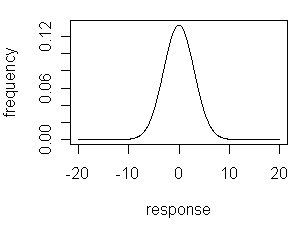Glossary
- Page ID
- 276182
Accuracy - The agreement between an experimental result and its expected value.
Analyte - The species of interest in a particular sample.
Bias - The difference between an experimental result and its expected value resulting from a determinate source of error.
Calibration Curve - A plot showing how an analytical method's result, such as absorbance, changes with respect to the amount of analyte.
Coefficient of Determination - In a regression analysis, the coefficient of determination, usually abbreviated as R2, gives the proportion of the variation in one variable (Y) that is explained by the other variable (X). The correlation of determination varies between 0 and +1. An R2 of +1 indicates that the regression model perfectly explains the variation in Y, and an R2 of of zero (0) indicates that there is no relationship between the two variables. An R2 of 0.75 means that 75% of the variation in Y can be explained by the values for X. The correlation coefficient is the square root of the correlation of determination.
Confidence Level - An expression of the probability that a difference between two values is significant.
Correlation Coefficient - In a regression analysis the correlation coefficient, usually abbreviated as R, measures the strength of the relationship between the variables X and Y. The value of the correlation coefficient varies between +1 and -1. An R of +1 indicates that there is a perfect positive correlation between X and Y (that is, as X increases, so does the value of Y) and an R of -1 indicates that there is a perfect negative correlation between X and Y (that is, as X increases the value of Y decreases). When R is zero (0) there is no correlation between X and Y. The correlation coefficient is the square root of the coefficient of determination.
Determinate Error - A source of error that has a fixed magnitude and direction; it also is known as a systematic error. A determinate error affects a measurement's accuracy and represents a bias in the result of an analysis.
Dixon's Q-test - A statistical test that is useful in identifying outliers.
Factor - A property of a system that is experimentally varied and that may affect the response.
Indeterminate Error - A source of random error that is neither of fixed magnitude or direction; it also is known as a random error. An indeterminate error affects a measurement's precision.
Mean - The average value for a set of data.
Normal Distribution - A "bell-shaped" distribution showing the probability or frequency of obtaining a given response. A normal distribution is centered on the response's mean value and is symmetrical, with its width determined by the standard deviation of the response. In the example shown below, the normal distribution has a mean of 0 and a standard deviation of 3

Outlier - A data point whose value is so much larger or smaller than other data points in the data set.
Population - All possible members of a particular system from which a sample can be drawn.
Precision - An indication of the reproducibility of a measurement or a result. The standard deviation and range are two common measures of precision.
Range - The difference between the largest and the smallest values in a data set.
Residual Error - The difference between an experimental result and its predicted value from a regression model.
Response - The property of a system that is measured.
Sample - The members of a population that are collected and analyzed.
Significant Figures - The digits in a measured quantity, including all digits known exactly and one digit (the last) whose quantity is estimated and thus uncertain.
Standard Deviation - A statistical measure of precision that gives an "average" deviation of the measurements about the mean.
t-Test - A statistical test used to determine if the difference between two mean values is too large to be explained by random error.
Uncertainty - The range of possible values for a measurement.


